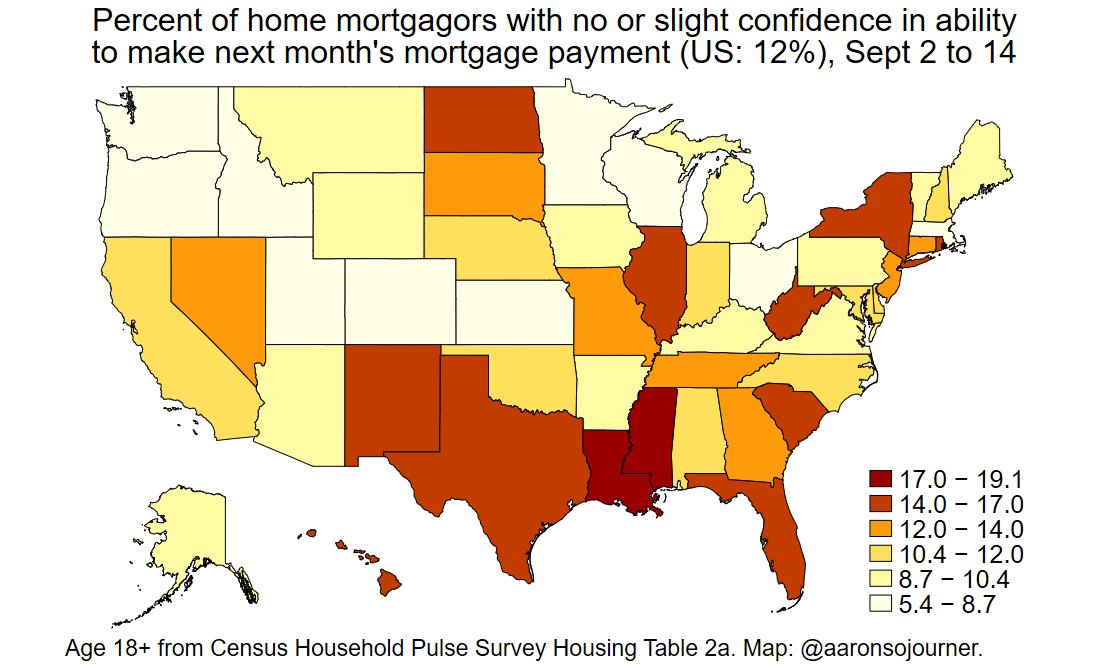Millions of Americans worried about their ability to pay for housing.
1 in 11 Americans with a mortgage and 1 in 4 renters report no confidence or slight confidence in their own ability to make their October housing payment.
Data @uscensusbureau #HouseholdPulseSurvey
1 in 11 Americans with a mortgage and 1 in 4 renters report no confidence or slight confidence in their own ability to make their October housing payment.
Data @uscensusbureau #HouseholdPulseSurvey
Huge shares of renters lack confidence in ability to pay October rent in Southern states, NV, NJ, RI, TX, and WY. 

A large share of American households with a mortgage lack confidence in ability to pay October housing payment in Southern states, Dakotas, IL, WV, SC, and NY. 

About 3 in 5 American adults report being employed and at work. This reflects slow improvement since spring and remains low overall.
Employment rates relatively high in the Midwest, mid-Atlantic, and New England, low in the South and Southwest.
Employment rates relatively high in the Midwest, mid-Atlantic, and New England, low in the South and Southwest.

Experiences with past & expectations of future employment income losses, and inability to make housing payments is hitting people in every racial and ethnic group and hitting Black and Hispanic Americans especially hard.
In every group, about 1 in 3 can't stop worrying most days
In every group, about 1 in 3 can't stop worrying most days

Households that were better off in 2019 are struggling far less than others.
Stresses are very prevalent among those who entered the crisis with the least.
However, even 2019 higher-income folks are feeling pressure. Over 15% expect employment income losses & worry chronically
Stresses are very prevalent among those who entered the crisis with the least.
However, even 2019 higher-income folks are feeling pressure. Over 15% expect employment income losses & worry chronically

Stressed household balance sheets getting more stressed.
At the end of August versus mid-July, greater shares of working-age Americans who lost employment income since the start of the crisis report that they are covering weekly expenses by spending down assets and adding debt.
At the end of August versus mid-July, greater shares of working-age Americans who lost employment income since the start of the crisis report that they are covering weekly expenses by spending down assets and adding debt.

Grateful for the @uscensusbureau & @BLS_gov staff who enable us to have timely, accurate, representative information about Americans' lives.
Follow @Friends_of_BLS & @copafsK to find out how we can show up for them.
Follow @Friends_of_BLS & @copafsK to find out how we can show up for them.
• • •
Missing some Tweet in this thread? You can try to
force a refresh










